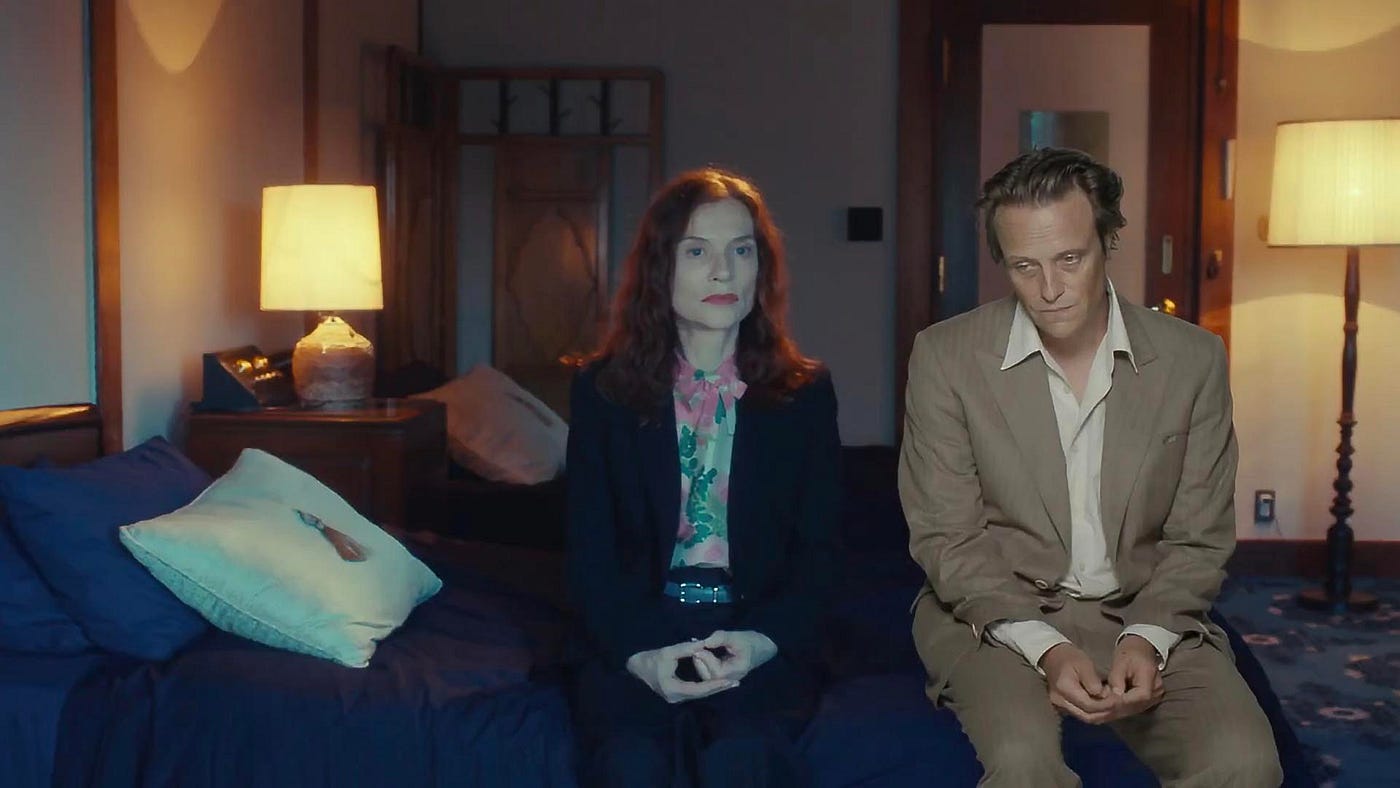Isabelle Huppert, portraying a French writer in Élise Girard’s Sidonie in Japan, embarks on a quest in Kyoto, finding herself amidst her own ghosts, demonstrating that one can indeed live with their phantoms
by Gianluca Arnone
Sidonie in Japan by Élise Girard can be aptly categorized as a ghost film that doubles as a cinematic exploration. In this realm of spectral beings, as one protagonist remarks, Japan is a land of ghosts, each individual haunted by their own. For Sidonie, the French writer at the heart of this journey and portrayed with an unprecedented lightness by Isabelle Huppert, it is her late husband Antoine (August Diehl) who haunts her. Reluctantly propelled across the world to promote a reissue of her successful debut novel, eloquently named L’ombre portèe [The Shadow Cast], Antoine’s phantom follows her everywhere. He is not the imaginary man of Morin, but a magnificent yet intangible presence – a shadow, or in cinematic terms, an image.
The film borrows from Morin the concept of the mummy’s complexity. The fluorescence of a life gone, frozen within the image’s capsule. Memory here is not a remnant but a tangible reality. At the same time, the narrative navigates the untying of pain, the emancipation from trauma, culminating in the realization that eternity is encapsulated in a day, a day defined by love (frozen in a succession of snapshots, reminiscent of Marker’s work).
Art may not be therapy, as Sidonie declares to the press, but it certainly aids. Thus, the journey becomes a delicate dance between the living and the dead in the ballroom of the invisible, to accept the latter while choosing the former. For Westerners, Japan, in this fortunate season of cinematic rediscovery, is no longer ‘lost in translation’ but an awakening, an ideal passage to reconnect – like a window flung open – the inner and outer worlds. The film features Miyazaki’s herons and Nara’s deer, fauna and symbols of the threshold that both connects and separates. Like a threshold is the Japanese publisher character, Kenzo Mizoguchi (brilliantly played by Tsuyoshi Ihara), not a relative of the famed director but carrying the same spiritual legacy.
He is the one who finally allows the protagonist to land – internally and physically – somewhere. And Kenzo is not the double but the other who resembles. There’s a revealing moment in the film when, after setting sail to a maritime location near Kyoto, Sidonie remarks to Kenzo, “This looks like Capri,” to which the caustic man replies, “We Japanese have always been masters of imitation.” The irony is directed at Sidonie, who still struggles to fully free herself from her own imagination. As she herself admits midway through the journey, “I recognize the same things here, but I don’t know how to use them.”
The apprenticeship does not require extraordinary tests. The journey’s itinerary and the film’s mood are aligned, consistently placid, light, and serene. Eastern in essence. If there’s a flaw, it might be that it’s overly measured. Or to use a literary metaphor, hypostatized. One senses the thought behind each gesture, the intention to go exactly where one intends to go. The book’s reissue coincides with the film adaptation. Japan bewilders and disorients the protagonist but is, in fact, quite recognizable to Western audiences. Even the piano accompaniment, a mix of Bach and Sakamoto, softens the differences, almost to the point of making them disappear. It’s not the intention that’s judged but the impact it creates.
Cinematografo, January 12, 2024





